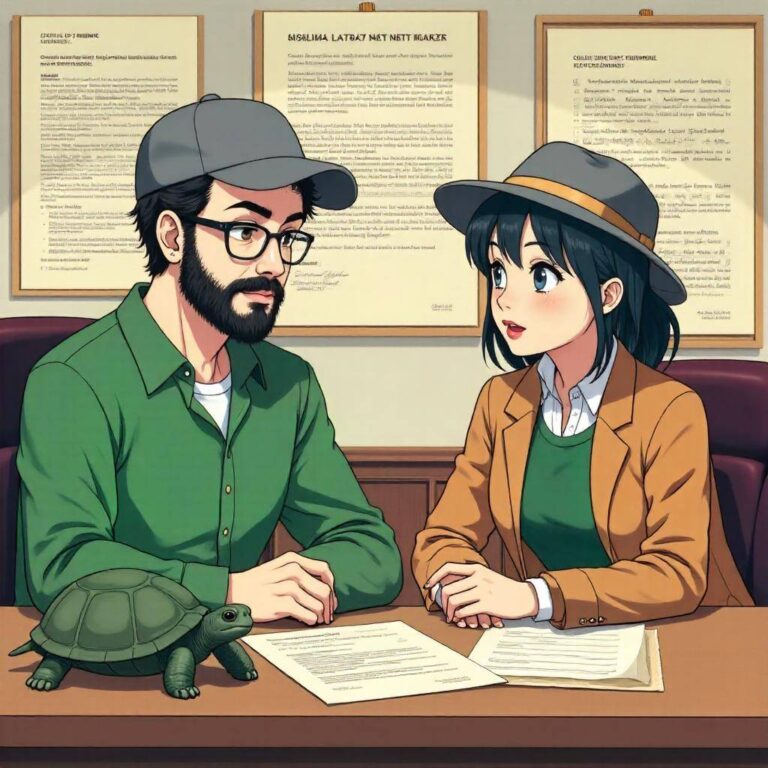Question from a reader:
There is a taxidermy turtle among my grandparents’ belongings, but does anyone know what kind of turtle it is? I would also like to know how to dispose of it. I’m concerned about whether there might be any legal issues or regulations involved. It would be helpful if you could provide specific disposal methods.
How to Dispose of
a Taxidermy Turtle from Grandparents’ Belongings and Legal Considerations
Hello! Recently, I received a question from someone who found a taxidermy turtle while sorting through their grandparents’ belongings. I have also been surprised by various items that turned up while organizing my family’s possessions. Today, I would like to discuss how to identify the type of turtle and the legal aspects of disposing of it.
Want to Know the Type of Taxidermy Turtle
First of all, to identify the type of taxidermy turtle, there are several points to check. By examining the shape, color, and shell patterns, you can often find clues about the turtle’s characteristics. A friend of mine was puzzled when he saw a taxidermy specimen he found at his family home and wondered, “What is this?” He utilized the internet to browse turtle encyclopedias and specialized websites, ultimately deciding to contact a specialized museum. As a result, the turtle he found was identified as a “soft-shelled turtle,” and due to its good condition and preservation, it was treated as a very valuable item. If you want to identify the type of taxidermy turtle you have, please try the following steps: 1. Take photographs: Capture detailed photos of the entire specimen, shell patterns, and foot shapes. 2. Use comparison websites: Look for comparison sites or encyclopedias that feature similar turtles to help identify the species. 3. Consult an expert: Showing it to experts at museums, zoos, or pet shops for their opinions can also be helpful.
Disposal Methods for Taxidermy Turtles
Now that you have identified the type of turtle, the next step is to consider how to dispose of it. The important thing here is the laws and regulations. Particularly, laws regarding turtles and other wildlife vary by country and region, so caution is necessary. Legal Regulations by Type In Japan, there is a law concerning the conservation of species of wild plants and animals that are at risk of extinction. This means that if certain plants or animals are protected, possessing their taxidermy can be legally problematic. Especially for endangered or protected species, you cannot dispose of them without permission. A story from an acquaintance comes to mind; he tried to dispose of a taxidermy turtle that belonged to his grandfather, only to discover that the turtle was actually a protected species, prompting him to cancel his plans. Therefore, it is crucial to first confirm the type of turtle and then investigate what legal regulations apply. Specific Disposal Methods If the taxidermy turtle is of a type that can be legally owned, you might consider the following methods: 1. Hire a specialized company: There are businesses that specialize in the disposal of taxidermy specimens. You can trust them to handle it safely, saving you effort. 2. Transfer ownership: If you know someone interested, you might consider transferring it to them. Just be sure to confirm that they can manage it appropriately. 3. Donate: Donating to a local museum or educational institution is also an option. If the taxidermy turtle has educational value, it may be welcomed. On the other hand, if the type of turtle is unknown or if there are legal concerns, I strongly recommend consulting an expert rather than attempting to dispose of it yourself.
Specific Information on Laws and Regulations
When handling taxidermy turtles, it is essential to review the relevant laws and regulations. Particularly when international transactions or transfers are involved, handling may be restricted under international agreements such as the “Convention on International Trade in Endangered Species of Wild Fauna and Flora (CITES).” Specifically, you should pay attention to the following laws and regulations: – Animal protection laws: Confirm whether the taxidermy turtle is protected under specific laws. – Local ordinances: Some regions may have their own animal protection ordinances. – International treaties: If it was brought back from overseas, consider regulations related to international transactions. I once brought something in without knowing the laws and ended up confused later, so I truly believe that prior confirmation is very important.
Conclusion
Deciding what to do with a taxidermy turtle that belongs to your grandparents, and considering its type, can evoke sentimental feelings. Personally, I often feel a special value in items filled with family memories. It is important to first identify the type of specimen and check the legal regulations before choosing an appropriate disposal method. If you have any concerns, consulting an expert can help you feel more secure as you consider the next steps. Sorting through inherited items can be emotional, as each piece holds memories, but let’s approach it calmly. It would be wonderful to pass on your grandparents’ memories to the next generation in whatever form possible.



